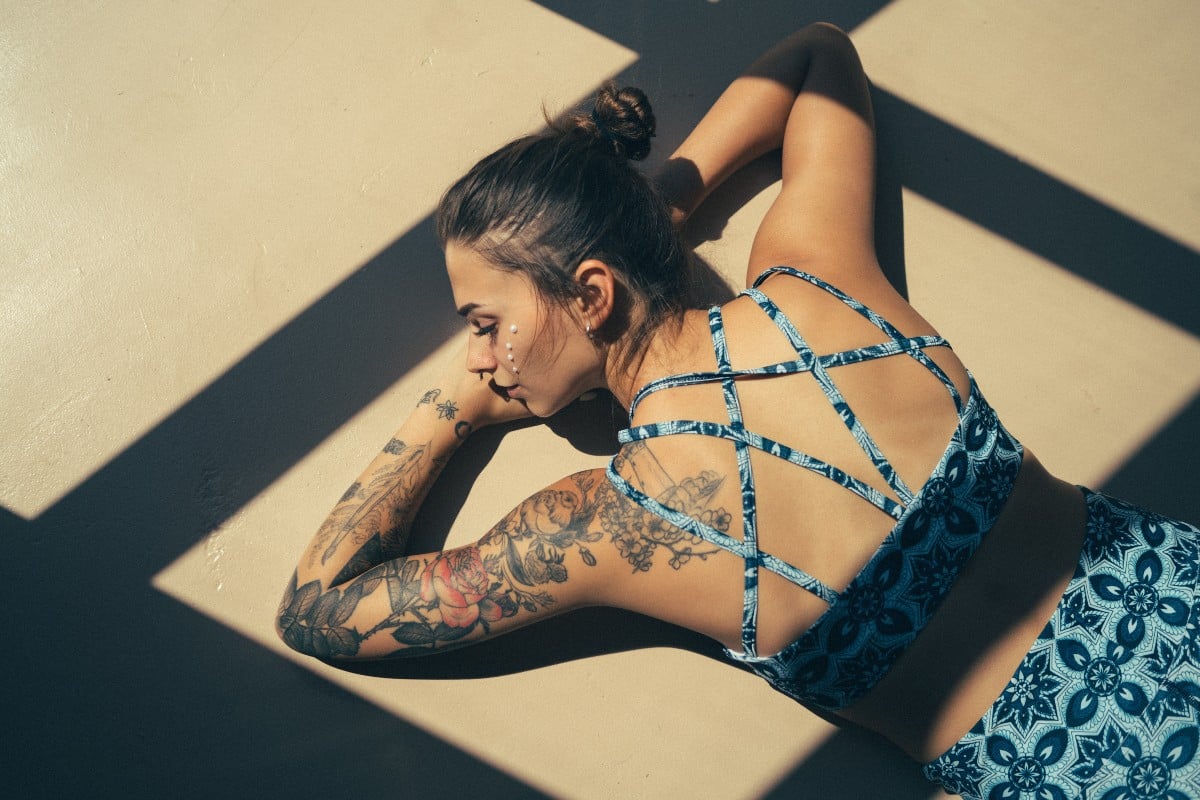If you’ve ever dealt with hyperpigmentation, you’re likely familiar with hydroquinone—the famous treatment that can brighten dark patches on the skin. But hydroquinone isn’t exactly a gentle ingredient and comes with its share of side effects. In fact, the ingredient is so risky that it’s banned in Europe and heavily restricted in other countries. Even the FDA put limits on non-prescription hydroquinone due to its potential to make the skin more sensitive to sunlight and cause cell damage.
But every cloud has a silver lining.
There are a dozen alternatives that are gentle and can still hit the mark when it comes to fading hyperpigmentation. Below we look at the best hydroquinone alternatives that brighten the skin without being harsh.
How hydroquinone alternatives work
Much like hydroquinone, most alternatives available are tyrosinase inhibitors and melanin regulators. What does this mean?
Well, melanin is like our skin’s natural sunscreen that protects us from sun damage. When our body is exposed to sunlight, it sends signals to cells to make more melanin in order to reduce UV damage. But here’s the thing: Melanin also makes our skin darker. When the body produces too much of it, it can cause pigmented spots, which often results in conditions like hyperpigmentation and melanin. Tyrosinase is the main enzyme that controls how much melanin our body makes.
Hydroquinone alternatives work by blocking the pigment responsible for dark patches. They interfere with tyrosinase enzyme and reduce the accumulation of melanin in skin cells. Some of the best alternatives include retinoids, mequinol, azelaic acid, arbutin, kojic acid, ascorbic acid, niacinamide, glutathione, and licorice extract.
Hydroquinone alternatives
Mequinol
Mequinol is a synthetic derivative of hydroquinone that can lighten areas of darkened skin, such as freckles, age spots, and melasma, by blocking your body from producing too much melanin.
Why mequinol is a good alternative, you ask? Well, studies suggest that mequinol is less irritating than hydroquinone and works at lower concentrations, which makes it more suitable for sensitive skin. It is also less likely to cause ochronosis, a bluish-black discoloration of the skin that happens especially in people with darker tones.
Retinoids
Retinoids, like retinol and tretinoin, are a class of compounds derived from vitamin A that encourage cell growth. Studies show that retinoids can reduce skin discolorations by about 60% and contribute to an even distribution of melanin in cells.[1] They also block the transport of melanin to epidermal cells and reduce the activity of melanocytes (pigment-producing cells), both of which lead to brighter skin.
Ascorbic acid
Ascorbic acid (the active form of vitamin C) is a natural antioxidant that plays a pivotal role in the skin’s natural regeneration process. Like hydroquinone, vitamin C reduces melanin production.[2] However, it does not irritate or sensitize your skin as much as hydroquinone does.
There was even a study comparing 4% hydroquinone and 5% ascorbic acid, and guess what? Most folks—93% to be exact—felt hydroquinone made their skin look better compared to 62.5% for ascorbic acid.[3]
But here’s the twist: when scientists used special tools to measure skin color, there was no statistical difference between the two. Besides, it’s good to note that hydroquinone had about ten times more people experiencing side effects than ascorbic acid. Plus, you can find over-the-counter products with 15% ascorbic acid and even more. If we look at the numbers from the study, that could be more effective than 4% hydroquinone.
Alpha-arbutin
Alpha-arbutin is a natural substance that comes from hydroquinone and is a good choice if your goal is to achieve a more balanced skin tone naturally. It’s like a melanin regulator, more potent than kojic acid and vitamin C when compared at a fixed concentration.[4] Moreover, alpha-arbutin is also found in foods like blueberries, cranberries, and pears. It’s not just good for your skin but also a healthy part of your diet.
Azelaic acid
Azelaic acid is really good at tackling hyperpigmentation and melasma due to its anti-inflammatory and tyrosinase-inhibitory abilities.[5] A study from ’96 showed that using azelaic acid at 20% is as effective as 4% hydroquinone and even surpasses 2% in clearing skin discolorations.[6] But wait, there’s more to this story. Azelaic acid is also an effective antioxidant and exfoliator. That means it eliminates pigmented cells and combats sun damage, reducing melanin levels in the process.
Kojic acid
Kojic acid is a chemical produced from fungi or through the fermentation process of rice. It’s one of those ingredients backed by a ton of research, and it’s usually the first thing dermatologists will recommend for pigmentation issues. Kojic acid reduces hyperpigmentation by inhibiting the production of tyrosinase and is also a potent antioxidant.
Glutathione
Glutathione is a molecule found in our bodies with very high antioxidant properties—no wonder it’s dubbed the mother of all antioxidants. It does double duty to block the enzyme that darkens our skin and fight off free radicals that cause dark spots.
However, here’s where things get really interesting. Studies found that glutathione can tweak the kind of pigment our bodies make.[7] It encourages the production of a lighter pigment (pheomelanin) instead of eumelanin (darker pigment), so our skin doesn’t darken as much when it’s fighting off UV damage. Products with just a smidge of glutathione—0.1%, 0.5%, and 2%—have been proven to be effective in reducing hyperpigmentation.[8]
Niacinamide
Niacinamide is a water-soluble form of vitamin B3 that our body’s cells use to make energy and repair cellular damage. It restores DNA, supports the immune system, and has anti-inflammatory effects that are beneficial in reducing skin redness and irritation. Moreover, niacinamide is also an effective alternative to hydroquinone since it can block melanin from reaching our skin cells. Just to give you an idea, there’s a study that found that 5% niacinamide could block melanin transfer by 35-68%.[9]
Glucosamine
Glucosamine is an amino sugar that the body uses to form cartilage and maintain tissue hydration. Besides inhibiting melanin production, glucosamine boosts our body to make more hyaluronic acid. This accelerates wound healing, enhances skin hydration, and diminishes wrinkles. Moreover, products containing 4% N-acetyl glucosamine (a derivative of glucosamine) are clinically proven to reduce the appearance of facial hyperpigmentation in eight weeks.[10]
Resveratrol
Resveratrol is a naturally occurring antioxidant that reduces cellular damage and suppresses melanin production. It’s an effective natural alternative to hydroquinone that can improve pigmented skin without causing worrying side effects. Studies show that resveratrol promotes skin brightness and corrects dark spots in concentrations of at least 1%. For the best results, apply a resveratrol serum in your morning routine.
Green tea/EGCG
Green tea isn’t just for sipping; it’s a ticket for radiant skin. It’s packed with polyphenols and catechins, which brighten the skin by reducing melanin and protecting our cells from oxidative damage. To get a bit science-y, the active compounds in green tea, especially EGCG, block the process that creates skin-darkening pigment. Some studies show that it can reduce melanin formation by 29% and enzyme activity by 45%.[11]
Licorice extract
Glabridin, the main compound in licorice extract, is an effective tyrosinase inhibitor, giving us a more even and lighter skin tone. That’s why you’ll often find licorice extract listed as an ingredient in skincare products promising to treat dark patches and brighten the skin.[12]
Sources
Women’s Concepts uses reliable sources, including dermatologists’ insights, clinical trials, and scientific journals, to find accurate information and support all the facts shared in our articles. All statements and claims have clear references. Read our editorial policy to learn more about our sources of information and our process of researching and fact-checking the content.
- Zasada M, Budzisz E. Retinoids: active molecules influencing skin structure formation in cosmetic and dermatological treatments. Postepy Dermatol Alergol. 2019;36(4):392-397. doi:10.5114/ada.2019.87443.
- Sanadi RM, Deshmukh RS. The effect of Vitamin C on melanin pigmentation – A systematic review.
- Espinal-Perez LE, Moncada B, Castanedo-Cazares JP. A double-blind randomized trial of 5% ascorbic acid vs. 4% hydroquinone in melasma. Int J Dermatol. 2004 Aug;43(8):604-7. doi: 10.1111/j.1365-4632.2004.02134.x.
- Boo YC. Arbutin as a Skin Depigmenting Agent with Antimelanogenic and Antioxidant Properties. Antioxidants (Basel). 2021;10(7):1129. Published 2021 Jul 15. doi:10.3390/antiox10071129
- Nguyen QH, Bui TP. Azelaic acid: pharmacokinetic and pharmacodynamic properties and its therapeutic role in hyperpigmentary disorders and acne. Int J Dermatol. 1995 Feb;34(2):75-84. doi: 10.1111/j.1365-4362.1995.tb03583.x.
- Breathnach AS. Melanin hyperpigmentation of skin: melasma, topical treatment with azelaic acid, and other therapies. Cutis. 1996 Jan;57(1 Suppl):36-45. PMID: 8654129.
- Sonthalia S, Daulatabad D, Sarkar R. Glutathione as a skin whitening agent: Facts, myths, evidence and controversies. Indian J Dermatol Venereol Leprol. 2016 May-Jun;82(3):262-72. doi: 10.4103/0378-6323.179088. PMID: 27088927.
- Etnawati, K., Adiwinarni, D. R., Susetiati, D. A., Sauchi, Y., & Ito, H. (2019). The efficacy of skincare products containing glutathione in delivering skin lightening in Indonesian women. Dermatology Reports, 11(s1).
- Hakozaki T, Minwalla L, Zhuang J, Chhoa M, Matsubara A, Miyamoto K, Greatens A, Hillebrand GG, Bissett DL, Boissy RE. The effect of niacinamide on reducing cutaneous pigmentation and suppression of melanosome transfer. Br J Dermatol. 2002 Jul;147(1):20-31. doi: 10.1046/j.1365-2133.2002.04834.x. PMID: 12100180.
- Bissett DL. Glucosamine: an ingredient with skin and other benefits. J Cosmet Dermatol. 2006 Dec;5(4):309-15. doi: 10.1111/j.1473-2165.2006.00277.x. PMID: 17716251.
- Katiyar SK, Afaq F, Azizuddin K, Mukhtar H. Inhibition of UVB-induced oxidative stress-mediated phosphorylation of mitogen-activated protein kinase signaling pathways in cultured human epidermal keratinocytes by green tea polyphenol (-)-epigallocatechin-3-gallate. Toxicol Appl Pharmacol. 2001 Oct 15;176(2):110-7.
- Simmler C, Pauli GF, Chen SN. Phytochemistry and biological properties of glabridin. Fitoterapia. 2013.






